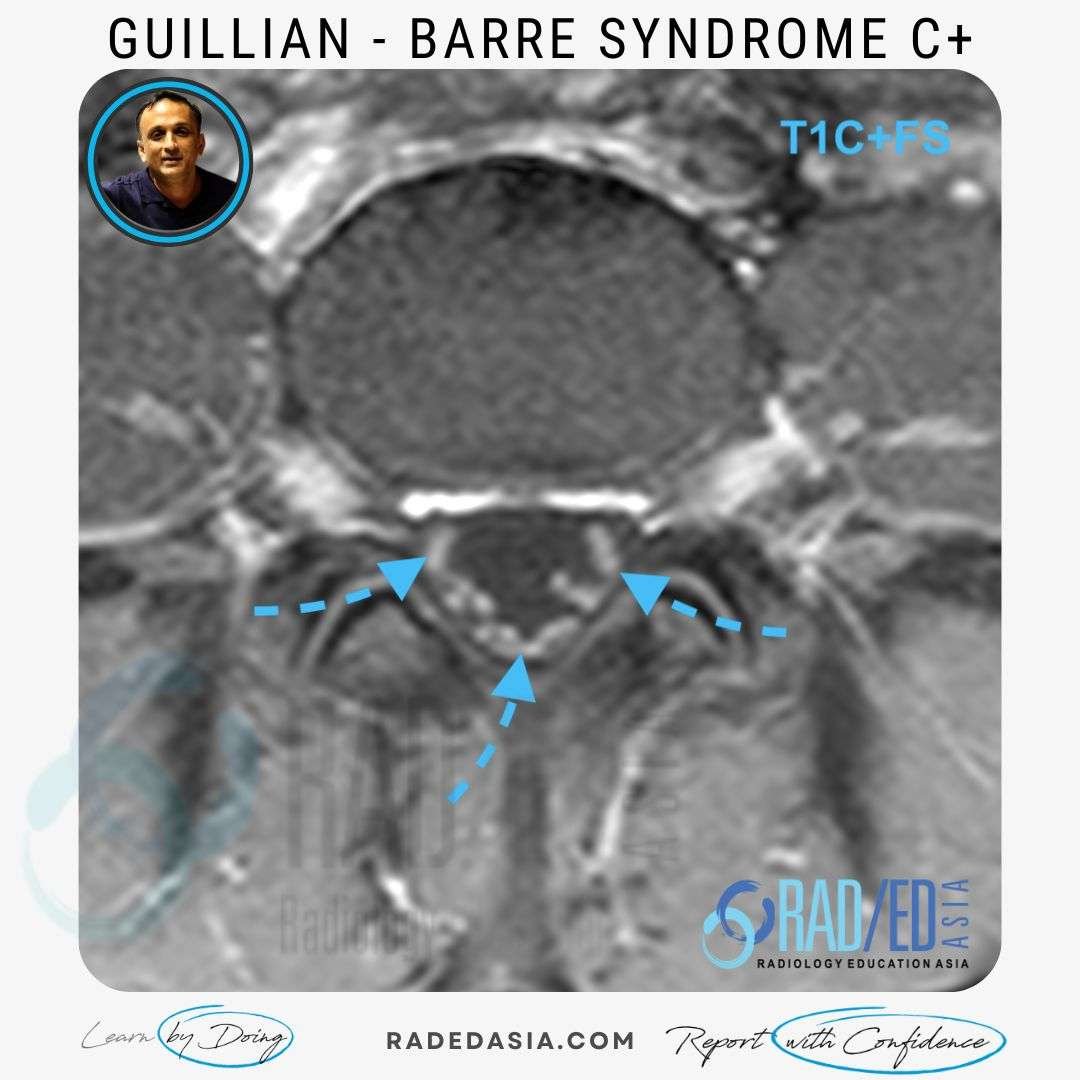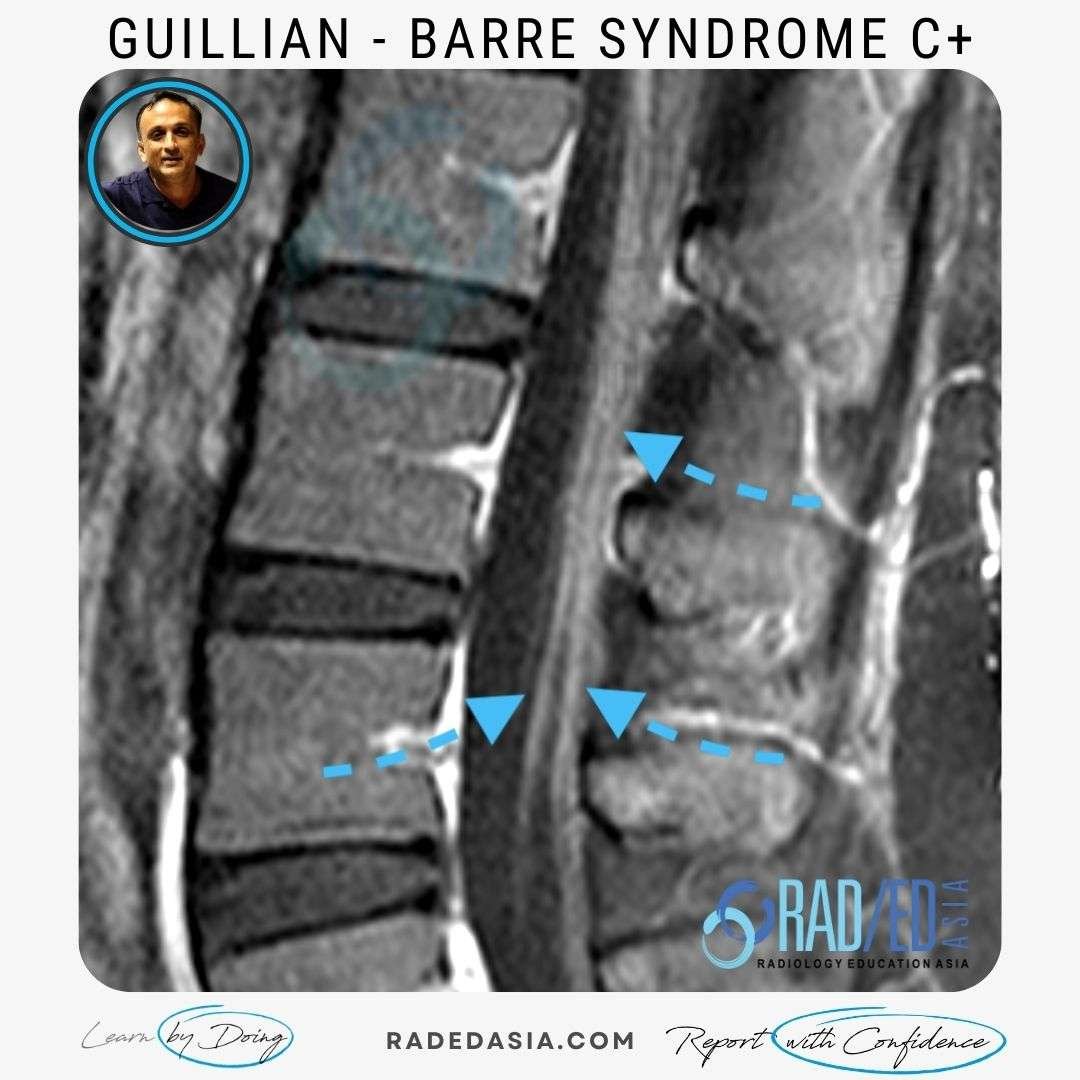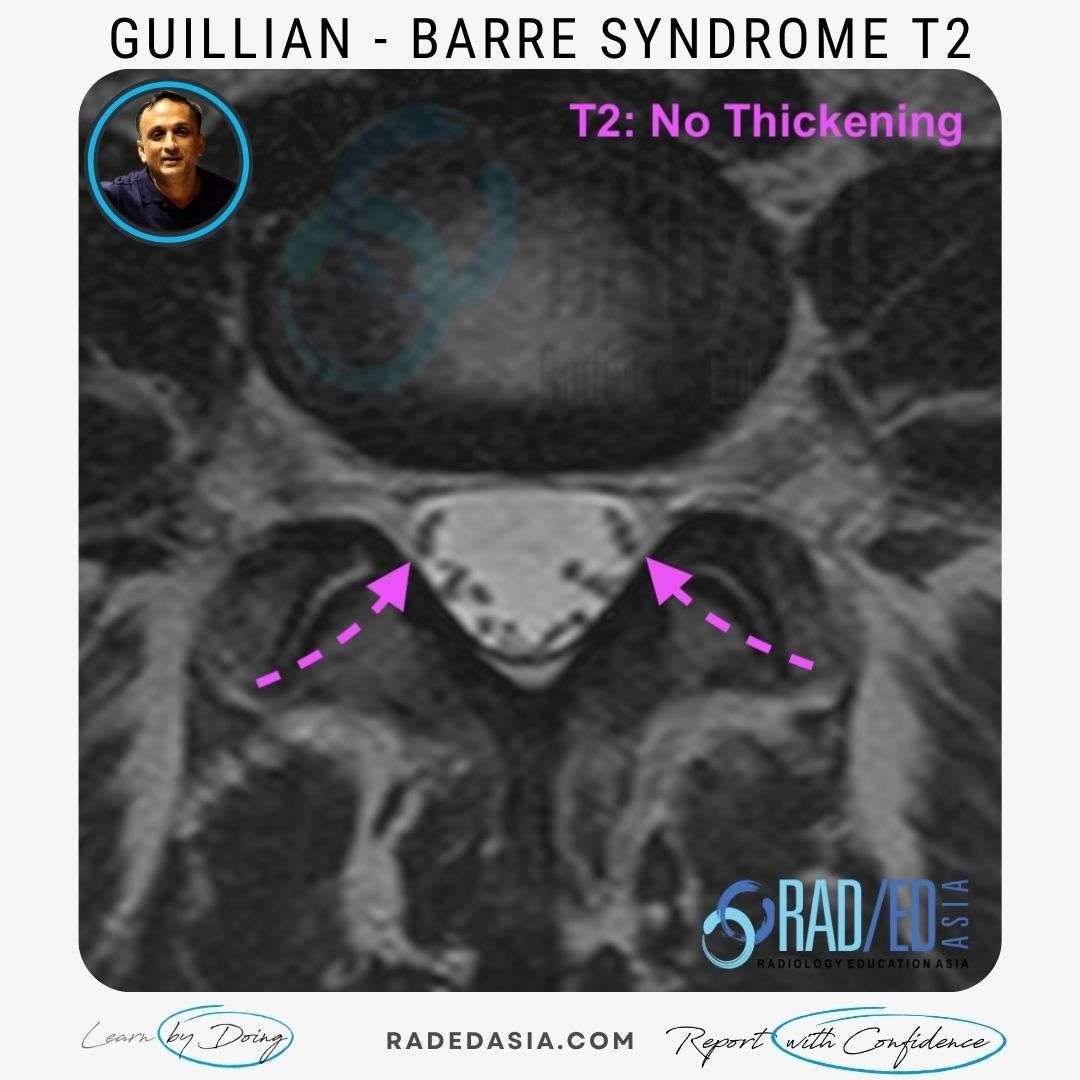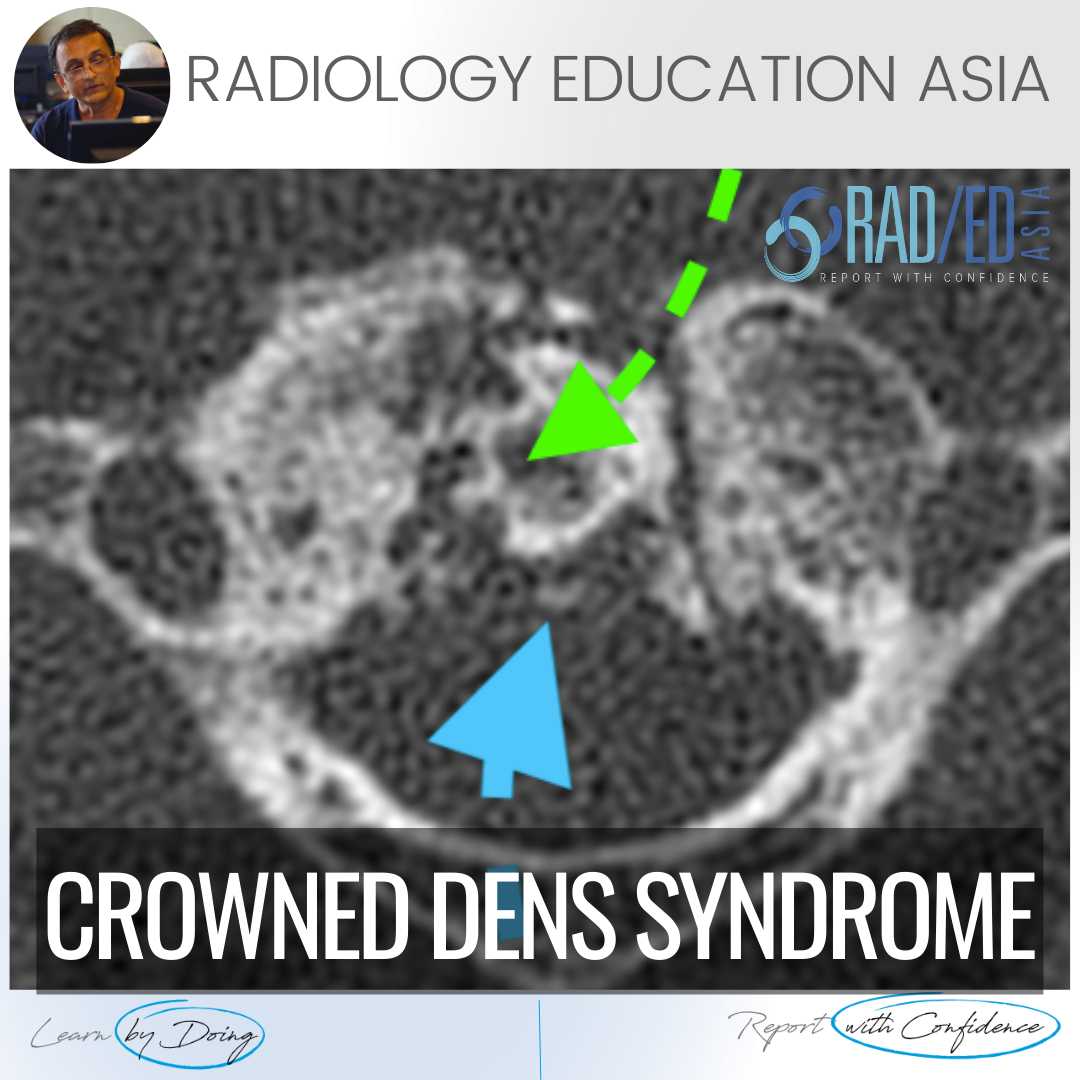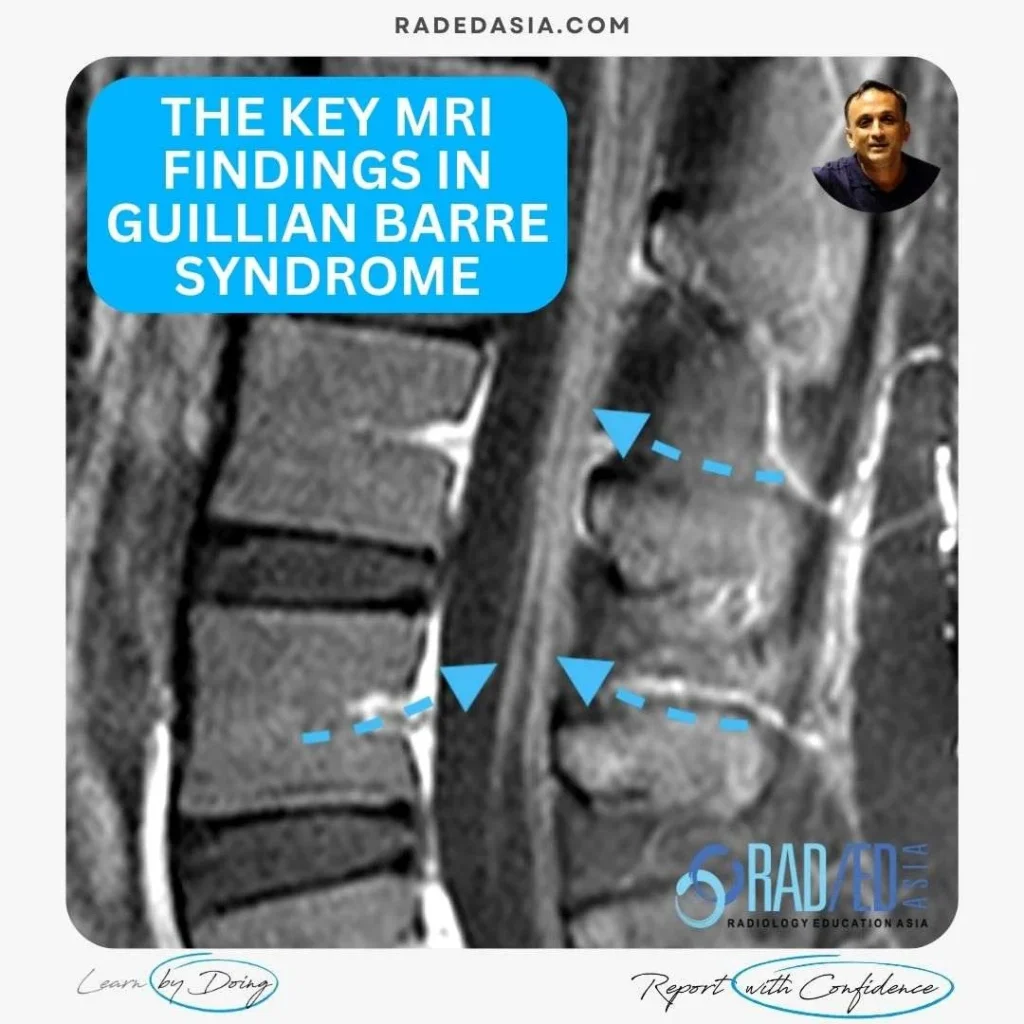
- 10th January 2026
SGD$695.00
MRI FINDINGS IN GUILLIAN BARRE SYNDROME

WHAT ARE THE MRI FINDINGS IN GUILLIAN- BARRE SYNDROME
WHAT ARE KEY MRI FINDINGS TO LOOK FOR IN GUILLAIN-BARRÉ SYNDROME?
NERVE ROOT ENHANCEMENT
- This is the most significant MRI finding in Guillain-Barré Syndrome.
- Look for enhancement of the nerve roots in the cauda equina region on post-contrast T1-weighted images (Blue arrows axial and sagittal images).
- Always fat saturate the post contrast T1 scans to make it easier to see the enhancement.
NERVE ROOT SWELLING
- The enhancement signifies inflammation of the nerve roots, which is a characteristic feature of Guillain-Barré Syndrome.
- This inflammation may cause the nerve roots to appear thicker than normal. However, this can be subjective and is not that common to see. In this case there is no appreciable swelling (Pink arrows).
SYMMETRY
ABSENCE OF OTHER SPINAL ABNORMALITIES
NORMAL BRAIN MRI
DO YOU NEED TO DO A FOLLOW-UP MRI?
TEST YOURSELF ON SOME COMMON & FREQUENTLY ASKED QUESTIONS
WHAT IS THE MOST SIGNIFICANT MRI FINDING IN GUILLAIN-BARRÉ SYNDROME?
HOW CAN THE ENHANCEMENT OF THE NERVE ROOTS IN GBS BE VISUALIZED MORE EASILY?
ARE THE NERVE ROOTS AFFECTED SYMMETRICALLY IN GUILLAIN-BARRÉ SYNDROME?
IS A NORMAL BRAIN MRI COMMON IN GUILLAIN-BARRÉ SYNDROME PATIENTS?
We look at all of these topics in more detail in our Guided SPINE MRI Mini Fellowships.
Click on the image below for more information.
- Join our WhatsApp RadEdAsia community for regular educational posts at this link: https://bit.ly/radedasiacommunity
- Get our weekly email with all our educational posts: https://bit.ly/whathappendthisweek
- 10th January 2026
SGD$695.00


